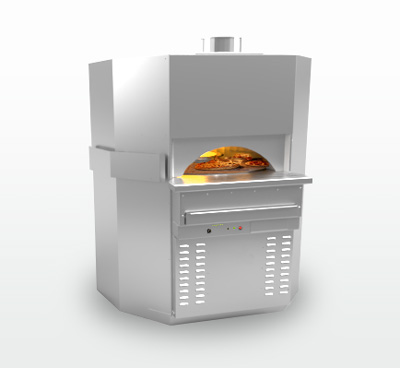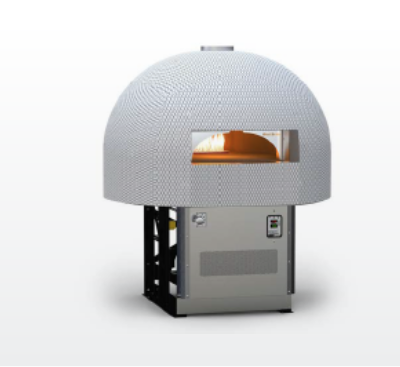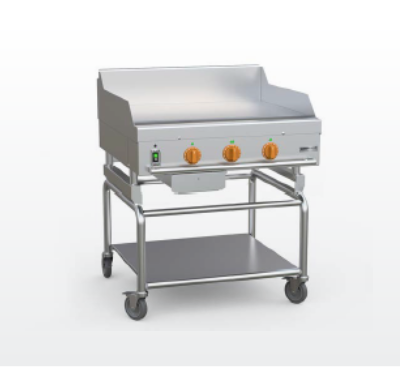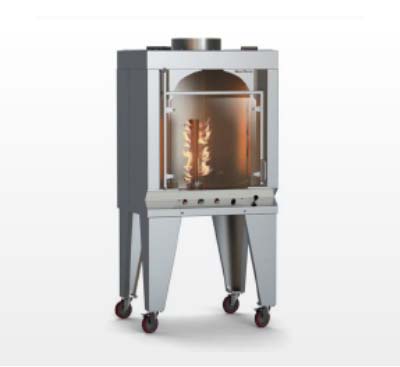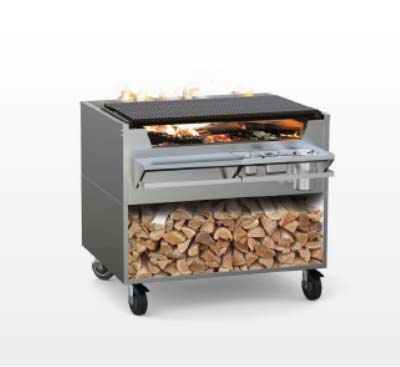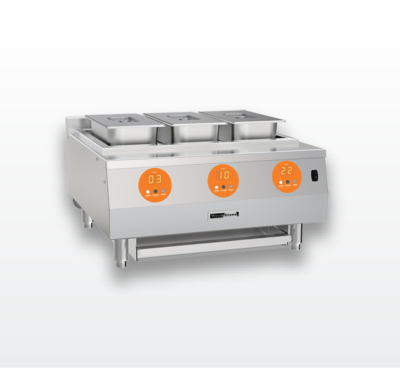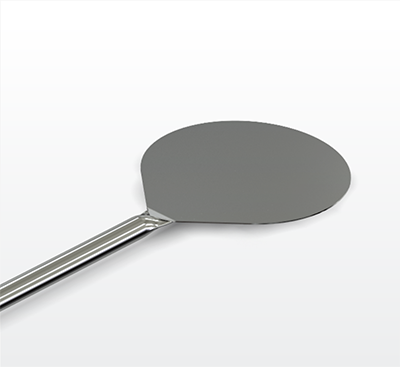Fire Deck Oven vs. Average Deck Oven
While Wood Stone Fire Deck Series ovens and traditional deck ovens are both built to bake pizzas and have similar footprints, that is where the similarities end. Here are several important differences.
Difference #1. Theatre
Traditional deck ovens are closed chambers without open flame. The baking happens behind the door, without a beautiful show for the customer, or visual keys for the chef. Wood Stone Fire Deck ovens are designed to operate without a door and showcase an open flame. Superior pizzas are created right before your customers’ eyes. They are show stoppers. A successful restaurant turns out consistently great food and provides an entertaining experience for its customers. The Wood Stone Fire Deck provides both.
Difference #2: Superior Operation
Wood Stone Fire Deck ovens are easier to operate. The wide doorway provides a highly visible cooking experience. And because the oven does not rely on a door to maintain temperature, the cooking environment is predictable and consistent.
Traditional deck ovens are designed to work with a closed door–a barrier between the chef and the product. Besides the inconvenience of having to guess what’s going on in the oven, as the deck oven cools during higher production, the chef must open the door more often to check status, further increasing the inconsistency of the cooking environment. Realizing this shortcoming, most deck ovens are offered with stacking options, but the extra decks can only postpone, not solve, this problem during an extended rush.
Difference #3: Constant Bake Times
The average cook time for a thin to medium crust pizza is 3-5 minutes in a Wood Stone Fire Deck. Deck ovens will typically bake the same pizza in 6-8 minutes. This disparity becomes even greater in high-production scenarios, as deck ovens cannot maintain temperature as consistently as Wood Stone Fire Decks. Here are two of the reasons why:
Floor Construction
The floor of a Wood Stone Fire Deck is a single piece of high-temperature refractory cast to a 4–6″ thickness, depending on model. Most deck ovens use a tile floor that is 2″ thick or less. The Wood Stone floor provides tremendous thermal mass to hold on to heat during periods of peak production. The refractory provides more heat storage capacity, and the one-piece floor is more effective at transferring heat laterally. The result: consistent cook times and longer periods of peak production.
 |
 |
|
Significant thermal mass can replace the heat absorbed by the introduction of
|
Without thermal mass, the traditional deck oven cook. Times must increase to replace heat, becoming inconsistent. |
Underfloor Infrared (IR) Burner Options
Wood Stone Fire Deck ovens offer an optional Underfloor Infrared (IR) burner that further assists in maintaining consistent floor temperatures in even the most demanding, high-production environment. No other manufacturer offers this game-changing innovation. Introduction of cold product absorbs significant heat from the floor and shields radiant energy from entering the deck. The IR burner automatically fires up when the floor temperature falls below the Hearth Set Point, replacing floor heat immediately.
Difference #4: Consistent Production Output
Comparing the output of a Wood Stone Fire Deck oven against a traditional deck oven requires accounting for two variables: the amount of space within the oven and the time it takes to move product through the oven.
In this example we’ll consider a Wood Stone Fire Deck WS-FD-8645 and a double-stacked deck oven with a comparable footprint. The Fire Deck 8645 can hold six 16″ pies simultaneously with a consistent five-minute bake. The deck oven will hold twelve 16″ pies, with an initial eight-minute bake, although as time goes on, the bake will incrementally grow longer.
The Wood Stone Fire Deck, which has significantly more mass in its monolithic floor and dome, will deliver 5-minute pizzas as long as you have customers. An optional IR burner will deliver addition consistency. Your chef will have a constant cooking environment they can depend on, hour after hour.

